Published: january 14, 2010; Intelligence and Terrorism Information Center.
Tension between Egypt and Hamas following the construction of an underground barrier along the Egyptian-Gaza Strip border
1. About six months ago, Egypt began the construction of an underground barrier along its border with the Gaza Strip, designed to help combat smuggling. The barrier consists of metal piles, each several dozen centimeters thick, about 80 meters away from the border, at the depth of 15-30 m. The barrier is supposed to span about 10 km (6 miles), of which at least 150 m have been completed thus far.
2. The construction of the underground barrier by Egypt (“the wall”, or “the fence of death”, as it is referred to by Hamas spokesmen) is a major cause for concern for Hamas, considering the negative impact it will likely have on the smuggling industry. That industry, which includes smuggling weapons and civilian goods, is a major component in the military buildup of Hamas. Arms and ammunition, some of them originating in Iran, are transported to the Gaza Strip through the tunnels. Smuggling them into the Gaza Strip helped Hamas rebuild its military infrastructure after Operation Cast Lead, also by restoring its ability to launch rockets into central Israel.
3. In addition, the smuggling industry also contributes to the economy of the Gaza Strip and to the recovery of its civilian infrastructure following Operation Cast Lead. The construction of the barrier has Hamas and the Gaza Strip population concerned over a potential shortage of essentials, fuel, and raw materials, as well as an increase in prices triggered by such a shortage. Reports say that some residents have already started stocking food and raw materials.
4. Hamas launched a media campaign against Egypt to make it stop the construction of the barrier. At the same time, Hamas leaders called on the Arab world and the international community not to sit idly by. Hamas spokesmen claimed once again that the Gaza Strip posed no threat to Egypt’s security. Some of them even accused Egypt of collaborating with Israel and the US to “smother” one and a half million Palestinians living in the Gaza Strip. In addition, Hamas leaders Khaled Mash’al and Mahmoud al-Zahar admitted that Hamas was smuggling weapons into the Gaza Strip; Khaled Mash’al claimed, however, that the barrier constructed by Egypt would not prevent weapons smuggling because alternative ways to do it would be found. The Egyptian regime, through its government media and mosque preachers, countered by blaming Hamas for the blockade on the Gaza Strip.
5. Hamas’s media campaign was also accompanied by pressure on the ground. At first, Palestinian snipers fired at an Egyptian construction team, and even hit an Egyptian construction vehicle that was working on the site. In the second phase, violent clashes broke out along the border between the Gaza Strip and Egypt due to a protest rally organized by Hamas in front of the Rafah crossing to welcome the “Lifeline-3” convoy. The events resulted in the death of an Egyptian soldier and a Palestinian demonstrator; 35 Palestinians were wounded, five of them severely. The violent clashes underscore the tension between Hamas and Egypt over the construction of the barrier and over the difficulties imposed by Egyptian authorities on the arrival of aid convoys to the Gaza Strip.
6. Egypt shows determination in building the barrier, considering it an important security and political interest. Building the barrier might be used, in our assessment, as a tool by Egypt for preventing the spread of Hamas influence from the Gaza Strip to Islamic opposition at home (the Muslim Brotherhood). The barrier might also weaken Hamas and strengthen Egyptian influence over it by making it difficult for Hamas to smuggle weapons into the Gaza Strip. In addition, in our assessment, Egypt has an interest in preventing its territory from becoming the main channel for introducing civilian aid into the Gaza Strip, in view of the difficulties of transferring it through the crossings between the Gaza Strip and Israel.
The Hamas’s media campaign and the reactions of Hamas
7. Legislative Council representatives in Gaza (most of them members of Hamas) gathered for an emergency meeting where they decided to launch a large-scale media campaign to raise awareness of the dangers to which the construction of the barrier would expose Gaza Strip residents. It was also decided to address Arab and international organizations, requesting to file lawsuits against the construction of the barrier. The council asked the Organization of the Islamic Conference (OIC) and human rights organizations to file lawsuits against the “wall of steel” constructed by Egypt along the Gaza Strip border, and assert that its construction contradicts international agreements. The Legislative Council demanded that Egypt stop the construction, and that the international community take responsibility for “lifting the blockade” on the Gaza Strip (Palestine-info, December 23).
8. The leaders and media of Hamas launched a media campaign against Egypt, protesting against the construction of the barrier (“the wall”1 or “the fence of death”, as it is referred to by Hamas). Hamas spokesmen warned against the severe repercussions it would have. According to an official announcement made by Hamas spokesman Sami Abu Zuhri, the “popular protest” activities will not stop until the construction is terminated. At the same time, it was reported that the two sides would meet to discuss the issue (Chinese News Agency, December 22, 2009).
9. Following is a selection of statements made by senior Hamas officials:
a. Mahmoud al-Zahar, a member of the Hamas Political Bureau, said that Gaza never posed a threat to Egypt. He mentioned the establishment (i.e., by Hamas) of an information gathering team on the construction of the “wall”. In one of his statements, Al-Zahar also admitted that Hamas smuggled weapons into the Gaza Strip, promising, however, that at no time would the weapons be used against Egypt (Al-Shorouq, December 16).
b. Khaled Mash’al, the chief of the Hamas Political Bureau, said that the construction of the “steel wall” was another sign of Israel’s intention to soon launch another assault on the Gaza Strip in revenge for its failure in Operation Cast Lead. He said that the “wall” would block the transfer of food and medicines to the Gaza Strip but would not hinder weapons smuggling to the Gaza Strip, because alternative ways would be found (Felesteen, December 22).2 During his visit to Saudi Arabia, he said that it was “an old plot concocted by Condoleezza Rice and Tzipi Livni after the war in Gaza”, designed to economically smother Gaza (almuslim.net, January 6).
c. Fawzi Barhoum, a Hamas spokesman in the Gaza Strip, said that the “wall” was being constructed as part of an American plan dating back to the Bush administration, designed to “smother one and a half million Palestinians in Gaza”. According to Barhoum, the Gaza Strip posed no threat at all to Egypt’s security. Barhoum also criticized what he referred to as Abu Mazen’s support of the construction of the “wall”, saying it facilitated the ongoing “blockade” on the Gaza Strip (Palestine-info, December 19).
d. Speaking at a demonstration organized by Hamas, Sami Abu Zuhri, a Hamas spokesman in Gaza, called to stop the construction of what he referred to as “the steel wall of death” which would “smother the Palestinian people”, and warned against the severe consequences of its construction. He also criticized the Egyptians, saying their actions were “contradictory to moral and religious responsibility” (Palestine-info, December 22). He further added that Hamas had launched “popular activities” against the fence which would continue until its construction was stopped (Filastin al-Aan, December 23).
e. Ahmed Bahr, the first deputy of the Legislative Council speaker, said that the “wall of steel” severed the “lifeline” of the Palestinians, constituting a collective punishment to all Gaza Strip residents. At the same time, he affirmed the depth of the historic relations between Egypt and the Palestinians. He said that just as the Palestinians did not accept the Israeli separation fence and demonstrated against it every day, Gaza Strip residents would not accept the Egyptian “wall” (Sawt al-Aqsa, December 22).
f. Muhammad Ramadan, the minister of agriculture in Isma’il Haniyah’s administration, said that the construction of the “wall” was a “death sentence” against one and a half million Palestinians. He said that the construction would also affect the flow of groundwater into and from the Gaza Strip (Palestine-info, December 24). Muhammad Abu Rabi’, the head of the Gaza Strip Water Authority, referred to the “wall” as the “wall of death”, saying that the Egyptians reinforced the foundations of the “wall” with iron, thus polluting the groundwater. He also called on human rights organizations to take action to stop the construction.
10. Hamas has also enlisted conservation bodies to its campaign. The Gaza Strip Ministry of Agriculture held a convention with the Palestinian Environment Conservation Authority to discuss the implications of the construction of the barrier on the environment, water, and plant life. During the convention, experts said that constructing the “wall of steel” would have political and legal repercussions, calling on the Egyptian president, the UN secretary-general, and the Organization of the Islamic Conference to put an end to the construction works (Palestine-info, December 24). Water expert Nizar al-Wahidi warned against the “wall of steel’s” negative impact on groundwater, likening it to the impact which, according to him, was caused by building the fence between Israel and the Gaza Strip. He added that excavations at the depth of 30 m would expose the groundwater to the penetration of dangerous substances and sea water (Ma’an, December 21).
Activity on the ground
11. The media campaign was accompanied by demonstrations and rallies organized by Hamas:
a. On December 20, a rally was held on the Egyptian border in front of the Rafah crossing. Attendance in the so-called “mass rally” was low.
b. After the Friday prayers of December 25, Hamas held processions which started at mosques and ended in a demonstration at the Gaza City Palestine Square.
c. As usual, Hamas enlisted children to its protest activities. Hundreds of children demonstrated in front of the Rafah crossing against the construction of the “wall”. The children chanted slogans against the “wall” and the measures taken by Egypt (Qudsnet, December 26).
Attempts to disrupt construction works
12. At the first stage, several attempts to sabotage the construction works were made. For example, “Egyptian security sources” reported that Palestinian gunmen fired at the construction team on the Egyptian-Gaza Strip border, damaging some equipment. The Egyptians declared a security emergency and reinforced the area (Ma’an, December 17). It was also reported that the incident did not affect the construction process (Al-Shorouq, December 20). According to one report, tunnel workers in Rafah managed to destroy a construction vehicle used by the Egyptians in their work, thus causing an insignificant delay (Pal Today, December 23). Palestinian sources reported that a group of armed Palestinians managed to cause some damage to the “wall” and to the excavation tools used for its construction (Qudsnet, December 25).
13. In the second phase, which was even more severe, violent clashes took place along the Egyptian border, peaking on January 6, between Egyptian security forces and Palestinian protesters. The background for the clashes was Egypt’s refusal to let the “Lifeline-3” aid convoy enter the Gaza Strip; however, the demonstrators, obviously with the encouragement of Hamas, also expressed protest against the construction of the barrier.
14. The clashes began when Hamas organized a protest rally in front of the Rafah crossing to welcome the “Lifeline-3” convoy into the Gaza Strip. During the speeches of Hamas spokesmen, dozens of young Palestinians suddenly began throwing stones at the Egyptian security forces that were monitoring the rally, and some of them even started climbing the fences. The clashes escalated quickly. Hamas security forces that arrived to hold back the protesters also came under a hail of stones. The Egyptian reinforcements that arrived on the scene fired several warning shots in the air. An Egyptian soldier and a Palestinian protester were killed in the clashes, and several dozen protesters were injured.
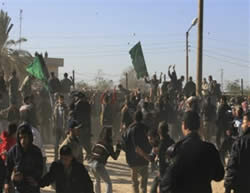
The violent clashes between Hamas protesters and Egyptian forces in Rafah (Filastin al-Aan, January 6)
Egypt’s reaction
15. At first, Egypt attempted to keep a low media profile. However, Hamas’s propaganda campaign and the events on the ground prompted Egypt to respond with its own media spin. Suleiman Awad, a spokesman for the Egyptian presidency, justified Egypt’s right to defend its borders in light of the weapons smuggling from Egypt to the Gaza Strip, saying that each tunnel had two directions and could just as easily be used for transporting weapons from the Gaza Strip to Egypt. He stated that, being a sovereign state, it was Egypt’s right and duty to guarantee the safety of its borders. He further added that the US also set up fences along its border with Mexico, and that there were many more countries which took various measures to maintain the security of their borders and territories. In addition, he said that the construction of the “wall” was not an indication of a change in Egypt’s policy, and that Egypt’s support of the Palestinian cause was just as strong as ever (Al-Ahram al-Masa’i, December 22).
16. The editorials of several Egyptian newspapers stressed the threat posed to Egypt by the smuggling tunnels, and Egypt’s right to defend its sovereignty and security. In addition, criticism has been made of Hamas and its allegations that Egypt is taking part in the “blockade” on the Gaza Strip (Roz al-Yousef, Al-Ahram, December 21). Egypt’s official media has emphasized “Egypt’s legitimate right to defend its borders”:
a. Muhammad Ali Ibrahim, the editor-in-chief of Al-Gomhuria, criticized an article by Ibrahim Isa, the editor-in-chief of Ad-Dustour, who compared the construction of the “wall” between Egypt and the Gaza Strip to the security fence built by Israel. He said it was a misrepresentation of Egypt’s stance on the “wall” issue, since Egypt was acting to exercise its legitimate right to protect its borders. He said that Egypt had presented Hamas with an “excellent” reconciliation document which allowed the opening of all crossings, including Rafah, but Hamas refused the proposal. According to Ali Ibrahim, the Egyptian “wall” was national, it was Egypt’s legal and constitutional right, and Egypt would not become a “second Palestine, from which investments and tourists are running away” (Al-Gomhuria, December 22).
b. Muhammad Barakat, the editor-in-chief of Al-Akhbar, condemned the criticism of the measures taken by Egypt along its border with the Gaza Strip and the “puzzling dismissal” of Egypt’s right to defend its borders. According to Barakat, the claim that taking action against smuggling activity between Egypt and Gaza is tantamount to saying that tightening the blockade on the Gaza Strip is groundless. Quite on the contrary, he said, Egypt opens the Rafah crossing on occasion to alleviate the suffering of Gaza Strip residents (Al-Akhbar, December 21).
c. Ibrahim Nafie, the editor-in-chief of Al-Ahram, criticized Hamas’s assault on the measures taken by Egypt to increase its border security. According to Nafie, non-Egyptians should not be telling Egypt what it should or should not do on matters pertaining to its national security (Al-Ahram, December 23).
17. In addition, many mosques in Egypt joined the attack on Hamas. The imam of the Abd al-Rahman mosque in Cairo asked the sniper who had killed the Egyptian soldier “what would you say tomorrow to your Creator?” Another preacher attacked those who had killed the Egyptian soldier, saying that Egypt had sacrificed thousands of its sons for the sake of the Palestinians. The imam of the Al-Rahma mosque accused Hamas of being “the reason for the siege of the Palestinians” and said that its leaders, who stuck to their positions, wanted to remain in the Palestinian Authority even at the expense of starving the people and making them flee. He added that the Egyptian soldier who had been killed was a shaheed and that the person who had killed him would “burn in hell if he does not atone for his sin” (Al-Quds al-Arabi, January 9, 2010).
Notes:
1. The term “wall” is also used for the security fence built by Israel.
2. Palestinian media reported that tunnel operators had decided to move their activity to areas further away from the “wall” construction site out of concern that the tunnels would collapse. However, the tunnel owners claimed that the “wall” would not stop smuggling activity altogether, perhaps just decrease it. According to a smuggling tunnel owner, tunnel owners have faced harder challenges (Al-Ayyam, December 15).
Mazzeltov,
Crethi Plethi



 RSS
RSS

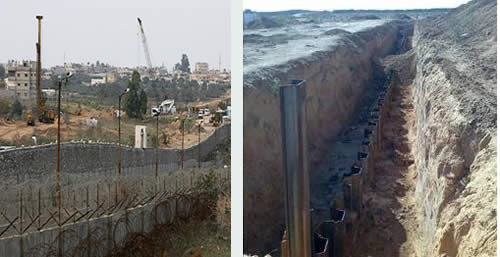

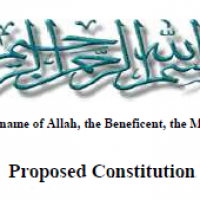

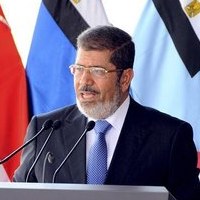
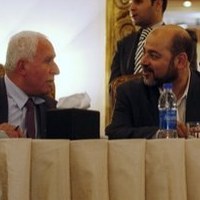





RT @CrethiPlethi: Tension between Egypt and Hamas #gaza #israel #egypt #hamas http://j.mp/8U5vwv
[…] Hamas following the construction of an underground barrier along the Egyptian-Gaza Strip border 1. Read More »google_ad_client = "pub-3667441628576694"; google_alternate_color = "FFFFFF"; google_ad_width = 728; […]